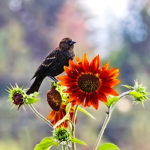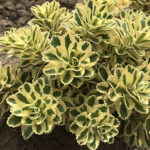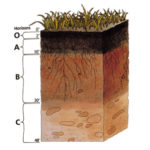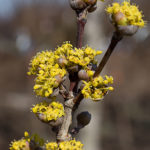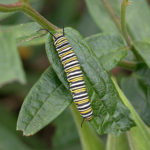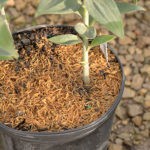As the cooling weather encourages me to change over from iced tea in the afternoon to hot tea in the morning and the blazing summer sun relaxes into a lower place in the sky, our landscape is changing too. Don't think that just because summer is over the yard must be dull and boring. In Michigan we are blessed with four seasons, each of them delightfully distinct.
When planning a landscape I love to focus on a few plants for each season so there is something to look at every month of the year. In the spring, trees are flowering and bulbs are popping up. Summer brings on bolder, more vibrant colors from blooming perennials, contrasted by thick, dark green leaves. From late summer into autumn there is an interesting transition period where some of the summer perennials are still showing off, whilst the cooler weather plants begin to display their offerings, like bright fruit and glowing fall foliage. Finally, the days become shorter and our warming sun cannot keep up with Old Man Winter. Branches turn bare, perennials retreat underground, and evergreens take prominence.
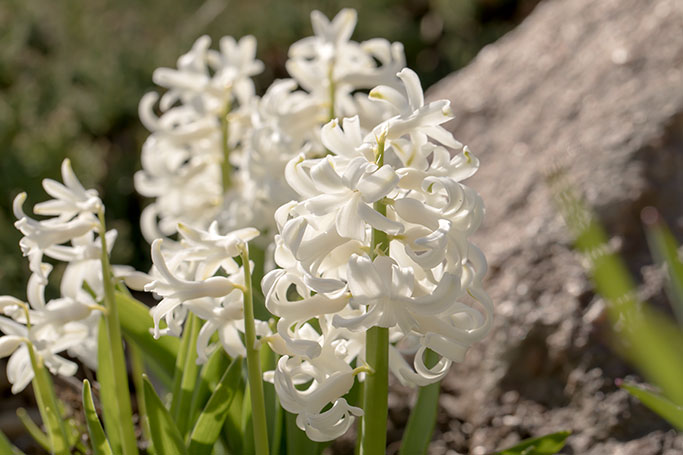
Hyacinth bulbs
Use forethought when designing the landscape. Plant diversely and consider what each of our splendid seasons has to offer and how your plant choices will display during each. Hiding in plain sight during warmer months are the showstoppers of colder months. Leafy bushes shape the structural backdrop, whilst other plants offer contrasting foliage to your summer flowering showcase. In the fall, these ignored plants begin to get some attention. You may hardly notice a crabapple after it’s week of spring flowers, but then in the fall it begins to display shiny red apples. A juniper can get lost in the scene until it’s steel blue needle tips poke through the windblown leaves and snow.
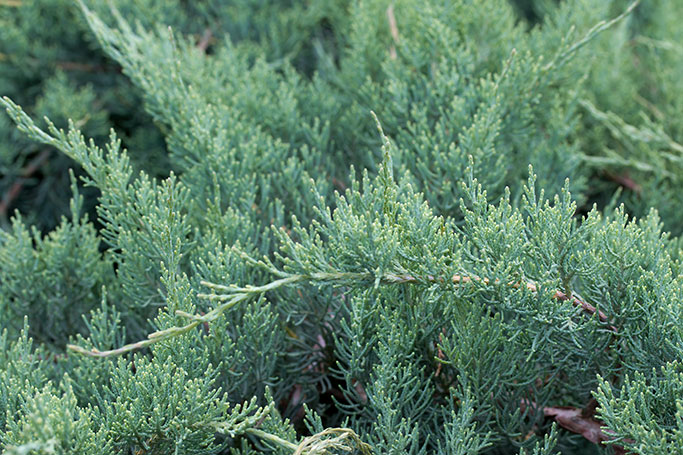
Juniper Grey Guardian™
When those first chilly end-of-summer mornings surprise you, look around and you’ll notice the Great Lakes native Joe Pye Weed (Eutrochium purpureum) standing tall. Another striking perennial is Helenium, with it’s daisy-like flowers in deep oranges and reds, blooming late summer into early fall.
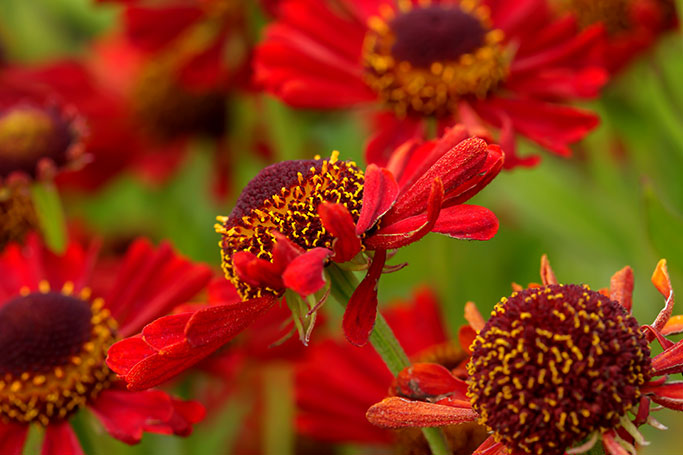
Helenium autumnale Mariachi™ 'Siesta'
Ninebark is a fantastic three-season shrub that offers spring and summer foliage interest, late summer flowers, and has cool weather hangtime with colorful seed capsules and handsome, peeling bark. Consider Diabolo® for it’s stunning dark foliage, or Summer Wine® for a more compact version.
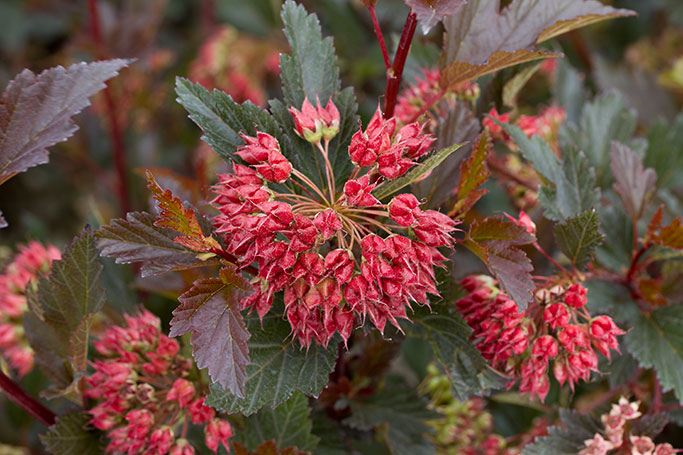
Physocarpus Summer Wine® seed capsules
When snow has covered the ground, don’t fret! There are plenty of plants in our landscape to keep the winter doldrums away. The red chokeberry, for example, is a great choice for those lower damp corners that you don’t know what to do with. Aronia arbutifolia ‘Brilliantissima’ should make your shortlist as it offers something in every season. White flowers, red fall color, glossy red berries, with dark woody twigs for the snow to settle on. Remember the clumping grasses you planted in the spring? What about the hydrangea you added soil amendments to? Standing clumps of dormant brown grasses and sturdy dried flower heads can present an engaging contrast to the white winter snow that sits atop of them.
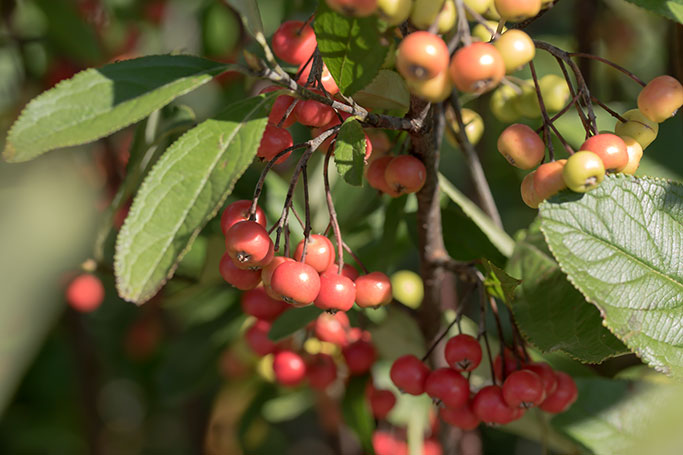
Aronia arbutifolia 'Brilliantissima' fruit beginning to color
Another aspect of our Michigan winters is the colorful population of birds. Wherever there are berries and seeds you will also find birds. Picture a tufted titmouse in a crabapple, hopping from branch to branch. For persistent fruit, Malus ‘Adams’ is still a popular choice. For a darker, almost red flower check out ‘Prairiefire’ and Royal Raindrops®.
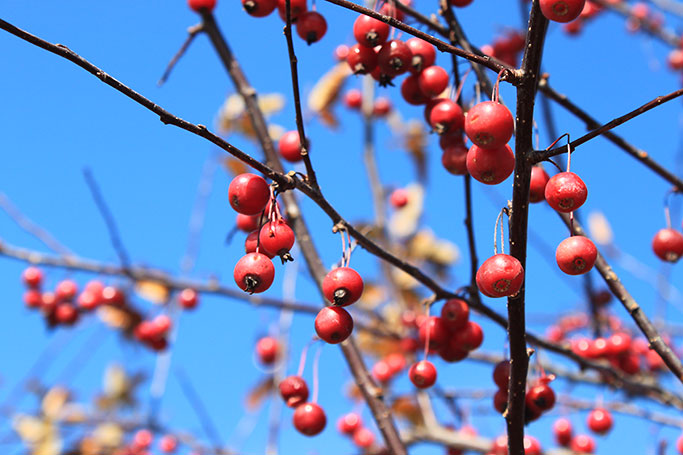
Malus 'Prairiefire'
Color in the garden is important, but don’t forget texture. Seven-Son Flower (Heptacodium miconioides) is a plant that I recently noticed while meeting with a customer on their jobsite. It’s a small tree (or large shrub) with white flowers in late summer or early fall immediately followed by showy, red-pink calyces, and a peeling brown bark that reveals lighter tan beneath for winter interest. This is one of those plants that few people know about and they can be hard to find. We get a few in now and then and can also special order for you, so please inquire.
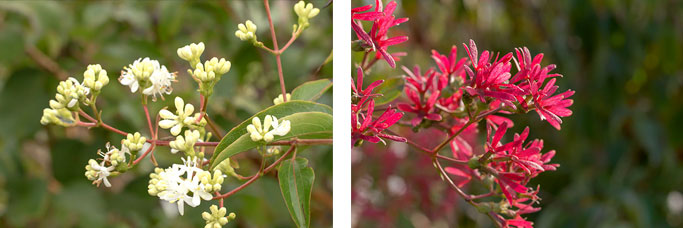
Heptacodium miconioides


